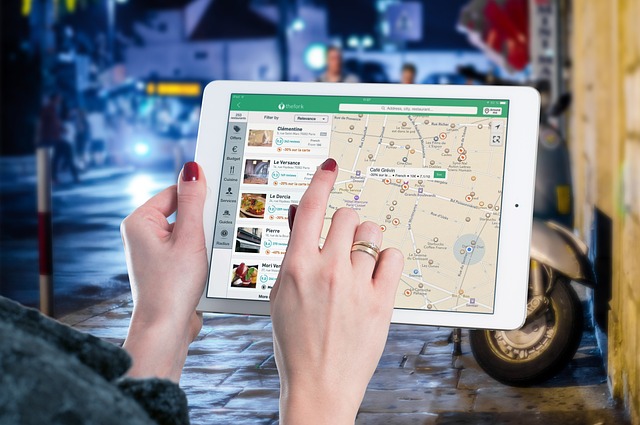Replacing an iPad battery at home can be achieved by following a careful step-by-step process. Begin by gathering the necessary tools like precision screwdrivers and a pry tool or spudger. Power down your device, back up all data, remove the back panel, unscrew and disconnect the battery, install the new battery with the correct orientation, reattach all cables, including the antenna cable, and meticulously reassemble the iPad. Ensure every component is secured in place and then power on the device to verify that the new battery holds a charge as expected. Test the battery's functionality by monitoring its charge retention during charging sessions, and ensure it maintains at least 80% of its charge for eight hours. If issues arise, double-check your installation, address any software glitches with a restart, or consult professional advice if persistent problems occur. Always use a compatible and high-quality battery that matches your iPad model to maintain performance and longevity.
Replacing an iPad battery can breathe new life into your device, and with this DIY guide, you’ll learn how to perform the task efficiently and safely. This comprehensive article walks you through understanding your iPad’s battery performance, the necessary safety measures to consider before beginning, and a detailed list of tools and parts needed for the job. We’ll then guide you step-by-step through the disassembly process, ensuring you handle your iPad with care. Follow our instructions on removing the old battery and installing a new one, and conclude with reassembling your device and testing its performance. Whether your iPad is sluggish or struggling to hold a charge, learning to replace the battery can be a cost-effective solution to common issues.
- Understanding Your iPad's Battery Life and Performance
- Safety Precautions Before Replacing an iPad Battery
- Gathering Tools and Necessary Parts for iPad Battery Replacement
- Disassembling Your iPad: Step-by-Step Guide to Opening the Device Safely
- Removing and Replacing the Old Battery with a New One in Your iPad
- Reassembling Your iPad After the Battery Replacement
- Testing Your Newly Replaced iPad Battery and Troubleshooting Common Issues
Understanding Your iPad's Battery Life and Performance

When your iPad’s battery life starts to wane, it’s often a sign that the battery needs to be replaced. Understanding your iPad’s battery performance is crucial for maintaining its optimal functionality. Apple iPads are equipped with lithium-ion batteries that typically have a lifespan of about 400 to 500 full charge and discharge cycles, after which their capacity to hold a charge diminishes. To gauge your iPad’s battery health, you can use the Battery Health feature in the Settings app under Battery. This tool provides a clear percentage indicating the maximum capacity relative to its design capacity. If the percentage is significantly lower than when the device was new, or if you notice that your iPad is not lasting as long on a single charge as it used to, it may be time to replace the battery. Replacing an iPad battery on your own can save you time and money compared to sending it to Apple for repair. However, it’s a delicate process that requires precision and care. Ensure you follow the correct safety precautions and use the appropriate tools to avoid causing further damage to your device. By carefully replacing the battery with a genuine replacement, such as those available from reputable suppliers, you can restore your iPad’s battery life to its former glory, making your device reliable for all your needs once again.
Safety Precautions Before Replacing an iPad Battery

When attempting to replace your iPad battery, adhering to strict safety precautions is paramount. Before proceeding with the replacement, ensure that you have discharged the device to a minimum of 10-20% battery life to reduce the risk of electrical accidents during the process. It’s crucial to use a certified replacement battery that matches the specifications and model of your iPad to avoid any potential damage or safety concerns due to incorrect voltage or capacity. Additionally, it’s advisable to perform this task in a well-ventilated area, as handling lithium-ion batteries can release fumes and gas during disassembly and reassembly.
Proper preparation and the right tools are essential for a safe battery replacement. Make sure you have the appropriate screwdrivers and prying tools to carefully open the iPad without causing damage to any components. Be mindful of the fragile nature of the display assembly, as applying too much force can lead to cracks or shattering. Furthermore, keep a multimeter on hand to verify the battery’s voltage after installation; this ensures that the new battery is functioning correctly and within safe parameters before you reassemble your device. Always refer to the official service manual from Apple for detailed instructions specific to your iPad model to guarantee both safety and successful replacement of the battery.
Gathering Tools and Necessary Parts for iPad Battery Replacement

If you’re considering replacing your iPad battery yourself, preparation is key. Before embarking on this DIY project, ensure you have all the necessary tools and genuine replacement parts to avoid any complications. You’ll need a set of precision screwdrivers, a prying tool or spudger, suction cups for removing the screen assembly, a heat source to safely warm the battery, and a plastic opening tool. Additionally, procure an authentic iPad battery that matches your device’s model. This ensures compatibility and safety during the replacement process. Apple iPads have proprietary components, so it’s crucial to use parts designed specifically for your tablet’s make and model to maintain functionality and avoid potential damage.
Safety is paramount when handling electronic devices, especially when dealing with their batteries. Make sure you follow proper safety precautions, including discharging the battery below 20% before beginning the replacement. Also, have a static-free mat or equivalent setup to work on, as well as an anti-static bag to store your removed components. Having an ESD (ElectroStatic Discharge) wrist strap is also advisable to prevent any electric shocks that could harm your iPad or yourself. With all the tools and genuine parts at hand, you’re ready to approach the task of replacing your iPad battery with confidence, knowing that attention to detail and patience will lead to a successful repair.
Disassembling Your iPad: Step-by-Step Guide to Opening the Device Safely

If your iPad’s battery life has diminished over time, it might be an indication that it’s time to replace the battery. Unlike older models, many modern iPads have non-removable batteries, which means you’ll need to perform a careful disassembly process to access and replace the battery safely. This guide will walk you through each step of opening your iPad without causing damage to other components.
Before you begin, ensure that you’ve gathered all necessary tools and safety equipment, including a set of precision screwdrivers, pry tools, suction handles, and anti-static wrist straps to prevent electrostatic discharge. Start by powering off your iPad and backing up its data, as any moisture or unexpected power surge during the process could result in data loss. Remove the back panel carefully by inserting the suction handle at one corner and gently applying force to separate the clips. Set the back panel aside and locate the battery, which is typically held in place with a few screws. Use the precision screwdriver to remove these screws and set them aside in their respective order to avoid confusion later.
Next, pry up the battery connector by gently inserting a plastic opening tool between the connector and its socket on the motherboard. This will disconnect the battery from the iPad’s power circuit, preventing any risk of electrical current while you work. With the connector disconnected, you can now safely remove the battery. Upon replacing the battery, reattach the connector first to ensure a proper connection before reassembling the device. Reverse the order of steps you took to open the iPad, making sure each component is firmly in place and securely fastened. After successfully replacing your iPad battery, power it on and check for optimal performance to confirm that the replacement was successful.
Removing and Replacing the Old Battery with a New One in Your iPad

If your iPad’s battery life has diminished over time, it might be due for a replacement. This DIY guide will walk you through the process of safely and effectively replacing your iPad’s battery to restore its former vitality. Before you begin, ensure you have the correct tools at hand: a suitable pry tool or spudger, a precision screwdriver set, suction handles for lifting, and, most importantly, the new battery that is compatible with your iPad model.
Start by powering off your iPad and disconnecting it from any chargers. Eject the SIM card tray to prevent any data loss. Next, remove the two screws at the bottom rear of the iPad and gently apply suction to lift the screen assembly. Carefully pry open the device, being mindful of the clips and cables you disconnect. With the screen lifted and securely held aside, locate the battery, which is usually secured with adhesive and screws. Remove these fasteners and gently lift out the old battery. Take note of the battery’s position and connection points to ensure proper placement of the new battery. Once the old battery is removed, place the new one in its exact orientation and reattach it with the necessary adhesive and screws. Reassemble the iPad, replacing all cables and ensuring everything is securely fastened. Power on your iPad to test if the replacement battery has been successfully installed and is charging properly. Always refer to the manufacturer’s guidelines or a trusted repair manual when performing any repairs to ensure the best outcomes and safety of your device. Replacing an iPad battery can be a delicate task, but with patience and attention to detail, you can extend your device’s lifespan significantly.
Reassembling Your iPad After the Battery Replacement

After carefully replacing your iPad battery, it’s time to reassemble your device. Begin by placing the new battery back into its original position, ensuring that it is properly aligned with the battery contacts and the opening in the iPad chassis. Gently press down on the battery to seat it correctly, and then replace the three Phillips screws that secure it in place. Next, reattach the antenna cable, making sure the connection is firm and the cable is not pinched or twisted in a way that could affect wireless signals.
Once the battery and antenna cable are secured, you can proceed to reassemble the remaining components. Carefully align and press the display assembly back onto the iPad’s frame, ensuring all edges are flush without any gaps. Secure the display with the retaining clips or screws, depending on your iPad model. Finally, replace the final set of screws along the edge of the device to complete the reassembly process. Double-check that everything is tight but not overtightened, as this could cause damage to delicate components. Power on your iPad to confirm that it functions properly and that the replacement battery is holding a charge as expected. If all is well, congratulate yourself on successfully replacing your iPad battery and restoring your device’s longevity and performance. Remember to follow the manufacturer’s guidelines or consult a professional if you are unsure about any step in the process.
Testing Your Newly Replaced iPad Battery and Troubleshooting Common Issues

Before reassembling your iPad after replacing the battery, it’s crucial to test the new battery’s performance to ensure it holds a charge as expected. Connect your iPad to its charger and observe how quickly the battery levels rise. Once the device is fully charged, unplug it and note the time. Typically, an iPad should retain at least 80% of its charge capacity after a full charge for eight hours. If the new battery doesn’t perform as anticipated, double-check your steps during the replacement process to identify any potential errors. Common issues that may arise include incorrect battery placement, software glitches, or a faulty battery itself. If the iPad shuts down unexpectedly or doesn’t power on, it’s advisable to revisit the battery installation procedure. Ensure all connections are secure and the new battery is properly seated within its compartment. After verifying the physical integrity of the replacement, consider restarting your iPad. A device reboot can often resolve software-related issues that may have arisen during the battery swap. If problems persist, you may need to consult the user manual for specific troubleshooting steps or seek professional assistance. Regularly testing your newly replaced iPad battery under various conditions will help you understand its performance and ensure optimal functionality over time. Remember to replace your iPad battery only with one that is compatible and of high quality to avoid further complications.
Replacing an iPad battery can be a straightforward task with the right knowledge and tools, as outlined in this DIY guide. By understanding your device’s battery life, adhering to safety precautions, and carefully following the disassembly and reassembly steps, you can extend your iPad’s lifespan and enhance its performance. With the guidance provided, you’re now equipped to confidently replace your iPad battery without the need for professional assistance. Remember to handle the components with care during each phase of the process, from removing the old battery to installing the new one. After completing the replacement, ensure to test your iPad to verify that the issue has been resolved and that your device operates efficiently. Should you encounter any post-replacement challenges, the troubleshooting section offers solutions to common problems. With these steps in mind, replacing an iPad battery is well within reach for those who wish to save time and money while keeping their device running smoothly.
